Far from Yokohama
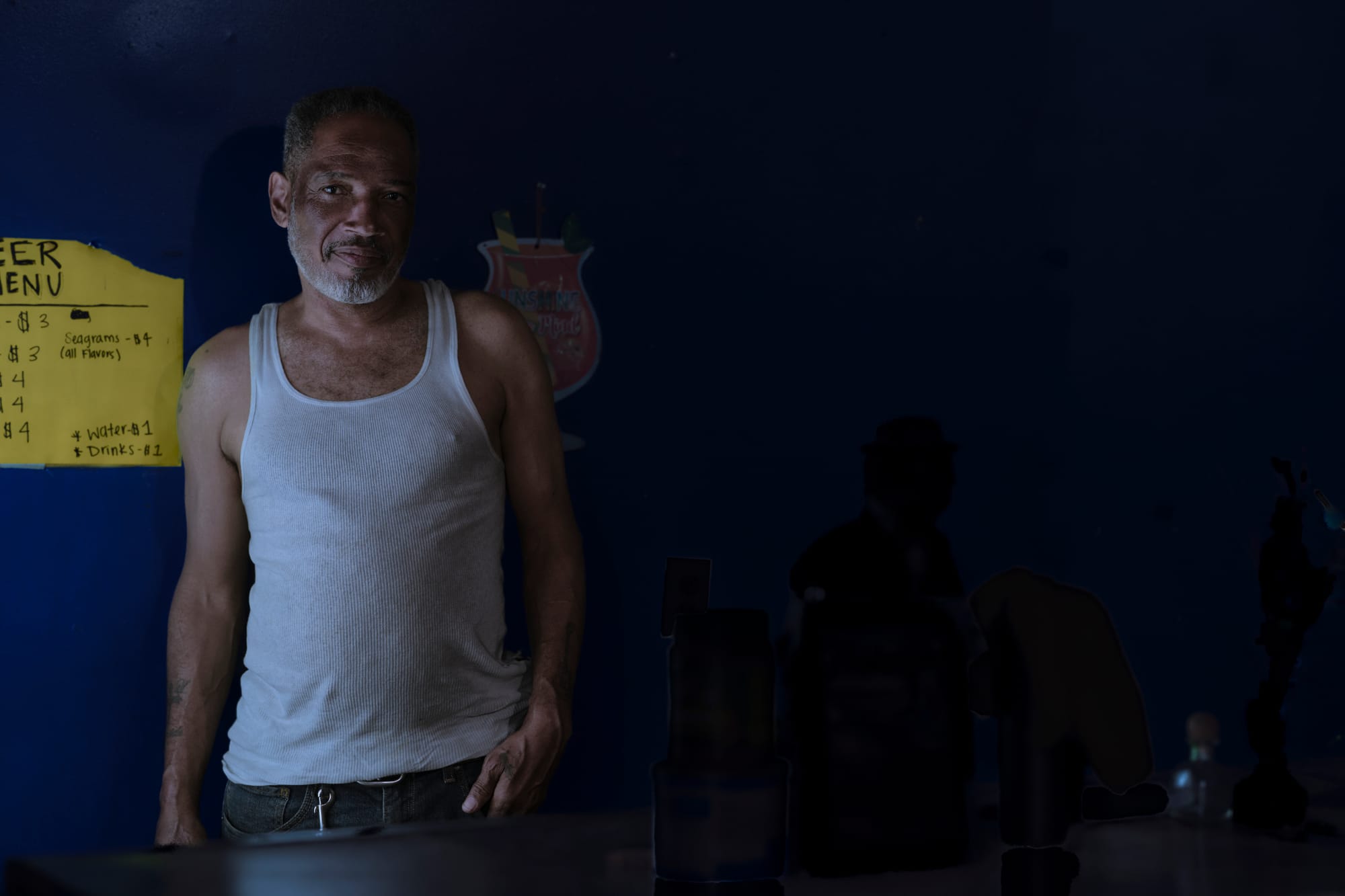
"Upriver from New Orleans, past the ports of Natchez and Vicksburg, looms Memphis – metropolis of the Midsouth and city of murder, necrolatry, and music. Memphis' muse hangs in the air like a crow circling in menacing descent... with sardonic eye winking on the tail draggers below, howling in the night to seduce and repel its prey. It is the song of sex and death sung always in the Delta, and it's the same song with a more baneful lilt sung up in the hills that comes eventually upriver or downriver into Memphis... and lingers in malevolent tones over its bayous and creeks and crossroads. It is the song of earth and sun, of loss and betrayal, of night and sacrifice, of catching the wind off the side of a boxcar, of floating into town on the black wave of a river barge, of drifting on the winding smoke of burning mansions."
Tav Falco – "GHOSTS BEHIND THE SUN Memphis: Splendor, Enigma & Death
I said fuck this hickerbilly hellhole, hopped on the bike and headed down to Memphis for some blues, brews, and barbecue.
Sorry, I just made that up. Let me try again, this time more realistically.
I said fuck this hickerbilly hellhole, packed up the mobility scooter and headed down to Memphis for no particular reason I could think of other the fact that it was in the American South, I hadn't been there before, and it sounded dangerous.
Better, but still not realistic. While it's true that I'd never been to Memphis, and that Memphis is dangerous, which it is, but that's more of a bug than a feature. Let me give it one more try...
I said fuck this hickerbilly hellhole, packed up the mobility scooter and headed down to Memphis to continue work on what may or may not become my American South project and to get further practice for the upcoming 95 project, which will be a major undertaking that I may or may not be capable of pulling off.
Typically, I don't do much, if any, research for these trips. I prefer to just experience it in ignorance, learn what I learn, and then do the research. But for the Memphis trip I prepared by obsessively watching the Jim Jarmusch film "Mystery Train." It's an excellent film with a great soundtrack by John Lurie and fantastic cinematography by Robby Müller. The idea to prepare by watching "Mystery Train" over and over started as a joke, as these things usually do, but as the joke kept bouncing around in my head I realized I might be on to something. I'd introduce myself to Memphis by searching out the locations from the film and see where that took me.
First, it took me to the Arcade restaurant which was in multiple scenes in the film.
The only real tourist thing I did besides eating at the Arcade Restaurant was to go to Lansky's. Lansky Bros, that is. Back in the old days it was on Beale Street and known for providing cool clothes to blues and rock acts, most notably Elvis Presley. Now it's located in an expensive hotel and seems to be more of a tourist racket than anything much like it was before.
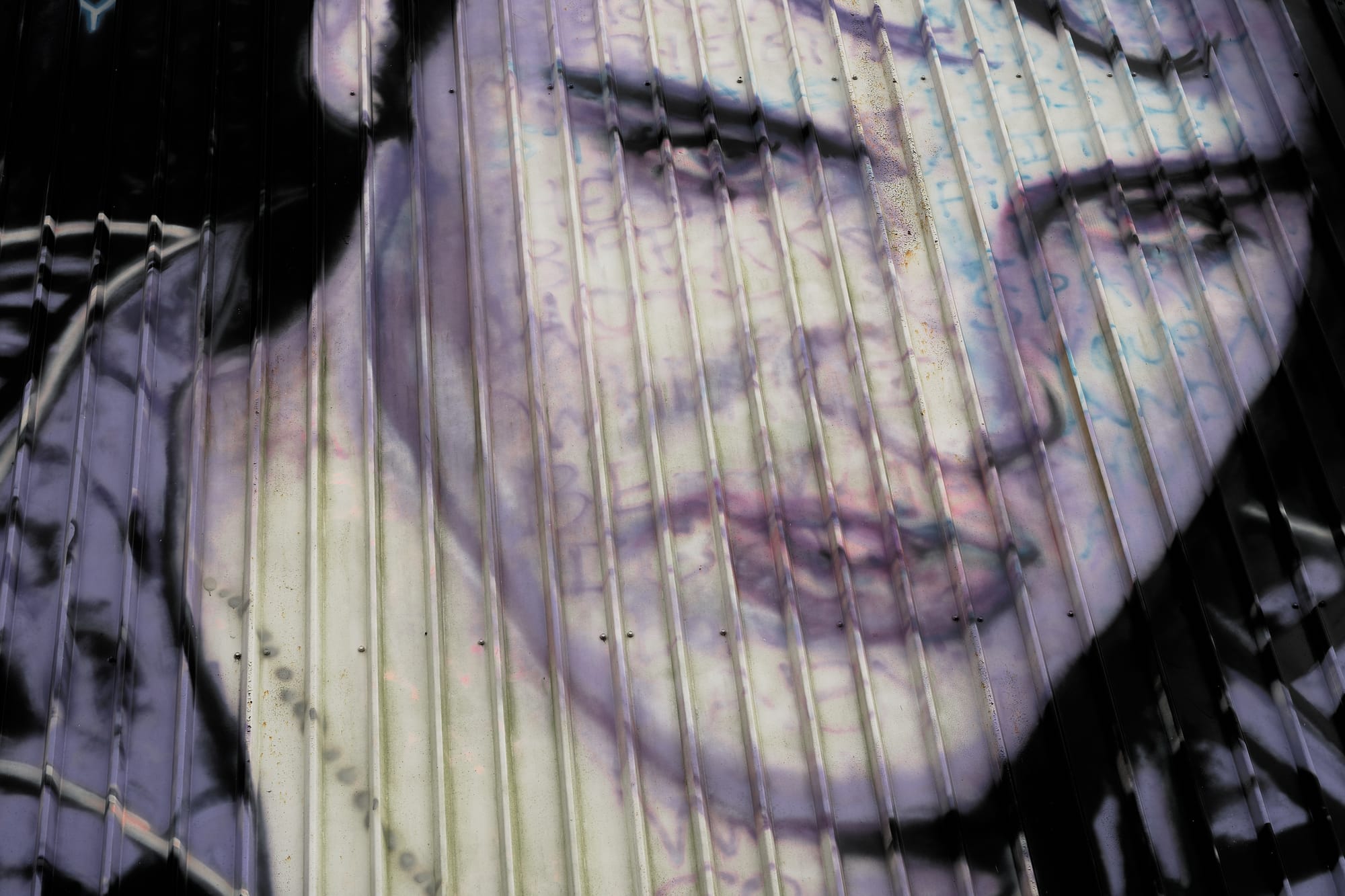
"In the heyday, in the Forties and Fifties when we first started down on Beale Street we did Army surplus, and then we went into the men's clothing business. What we did, was we went into high fashion menswear, really. What you'd call ethnic clothes. The white and the black at the time, Bobby 'Blue' Bland, Rufus Thomas, B.B. King, rock'n'roll groups, a lot white entertainers would come down, like Elvis Presley, Roy Orbison, Jerry Lee Lewis, Carl Perkins, Warrant Smith, Been Simmons, Billy Riley."
"So how long did Elvis Shop at Lansky's?"
"Elvis shopped here until he died... I put his first suit on him; I put his last suit on him."
Tav Falco – "GHOSTS BEHIND THE SUN Memphis: Splendor, Enigma & Death
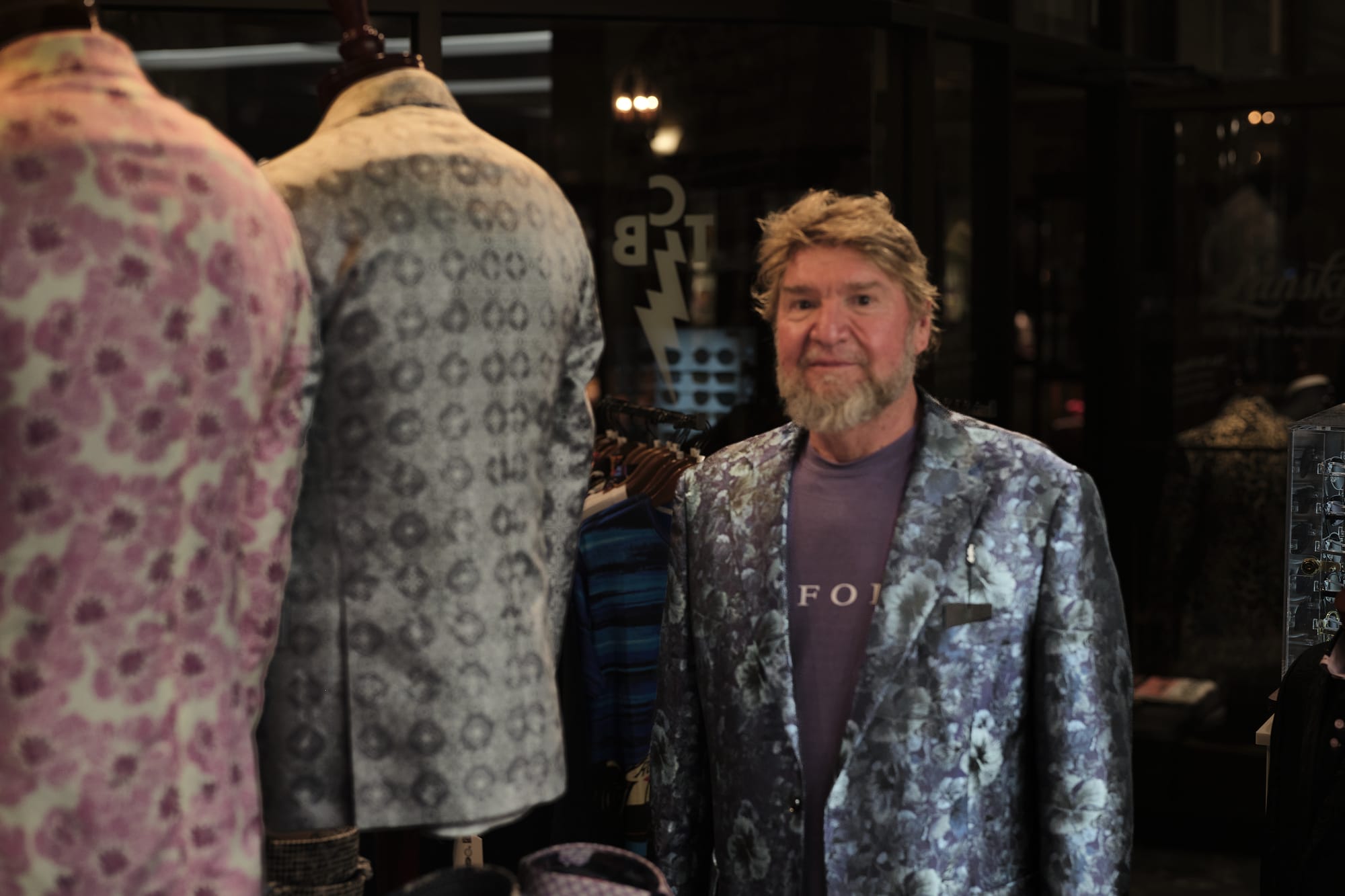
Perhaps you're bored with my usual travelogue type shit? Regardless, I thought I'd take a break break from, or at least better contextualize my usual narrative and tell you more about the methods I have for doing these things. Like the "Mystery Train" thing. And I was at Lansky's, for example, because it's mentioned in the song Nashville, Tennessee" by the Waterboys and that made me look it up and wanna go there. So that's a variation on the random nonsense method of traveling, and documentary photography.
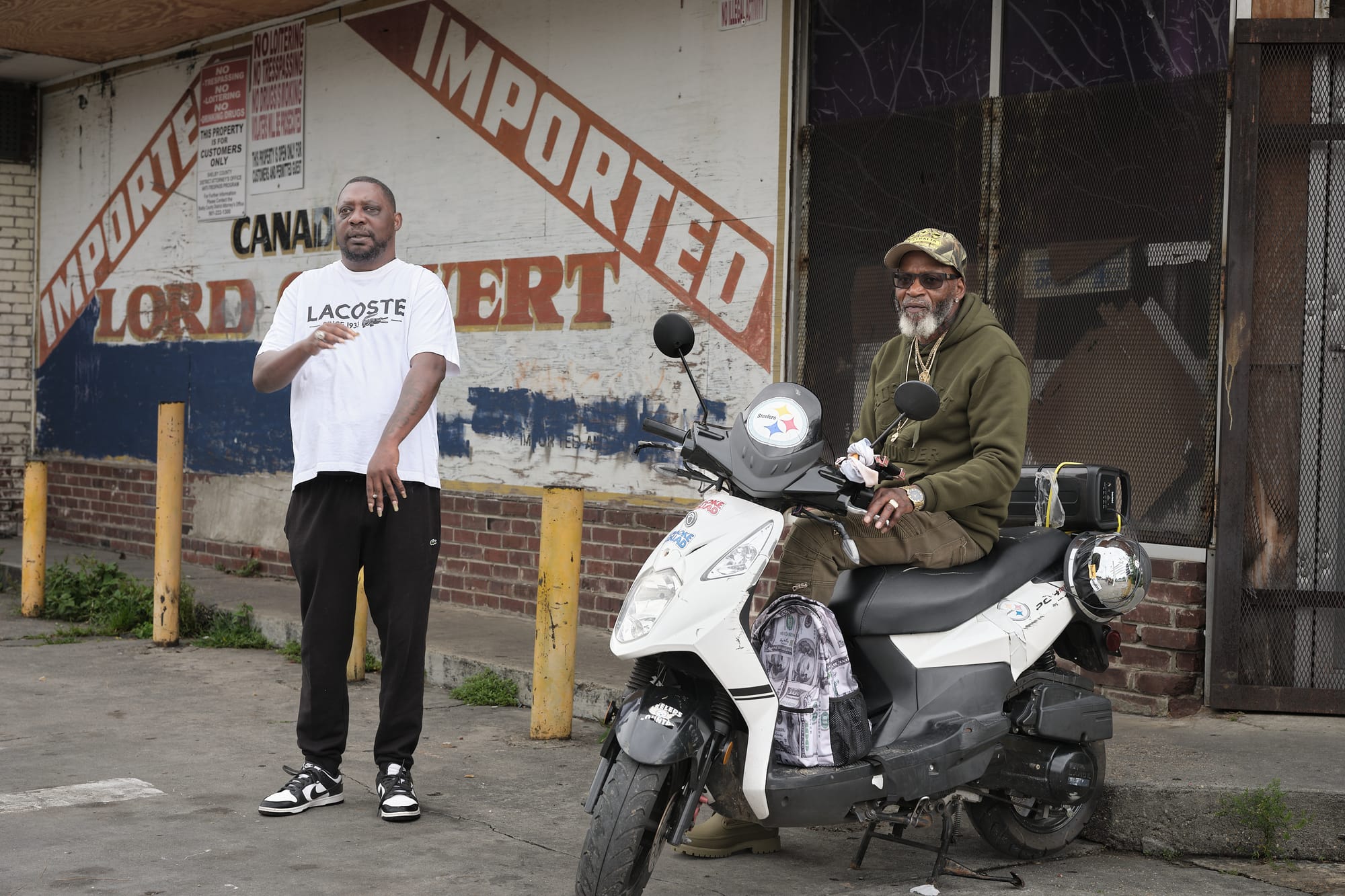
While I don't usually do much preliminary research, I like to start with a jumping off point, so to speak. I've found Atlas Obscura to be a good place for unusual direction. If you go to their website and search for a city, it will give a list of "cool, hidden, and unusual things to do." That's how I found the picture above. That's Lonnie on the scooter. He and the other guy were hanging out in the parking lot of a closed convenience store yelling "hey beautiful" type shit at women stopped at the traffic light or going in and out of the restaurant across the street. Lonnie had just got back from Australia and had a fresh Australia tattoo on his arm, which was crowded with tattoos of many other places he'd traveled. I wondered how it was that he did so much traveling, but I didn't ask. Me being dense and all, it didn't occur to me until later that he was probably a blues musician.
I passed by that corner on my way to a soul food restaurant recommended by Atlas Obscura in the Soulsville neighborhood of South Memphis.

The restaurant they recommended was the Four Way Restaurant. It turned out to be one of the better soul food restaurants I've come across. There was a famous picture by Ernest C. Withers on the wall of a dad pushing a kid in a stroller past a car full of threatening cops. I asked the owner of the restaurant about it. She said the child in the stroller was a good friend. Otherwise, the walls were covered with photos of every civil rights leader and many other prominent black folk eating there at one time or another.

The picture of Lonnie and his friend was a happy mixture of the two strategies. The reason I was riding that route through South Memphis on my way to the Four Way was because I'd been on a search to find the Lamar Theater that was pictured several times in "Mystery Train." The Theater is still there. And in about the same condition.
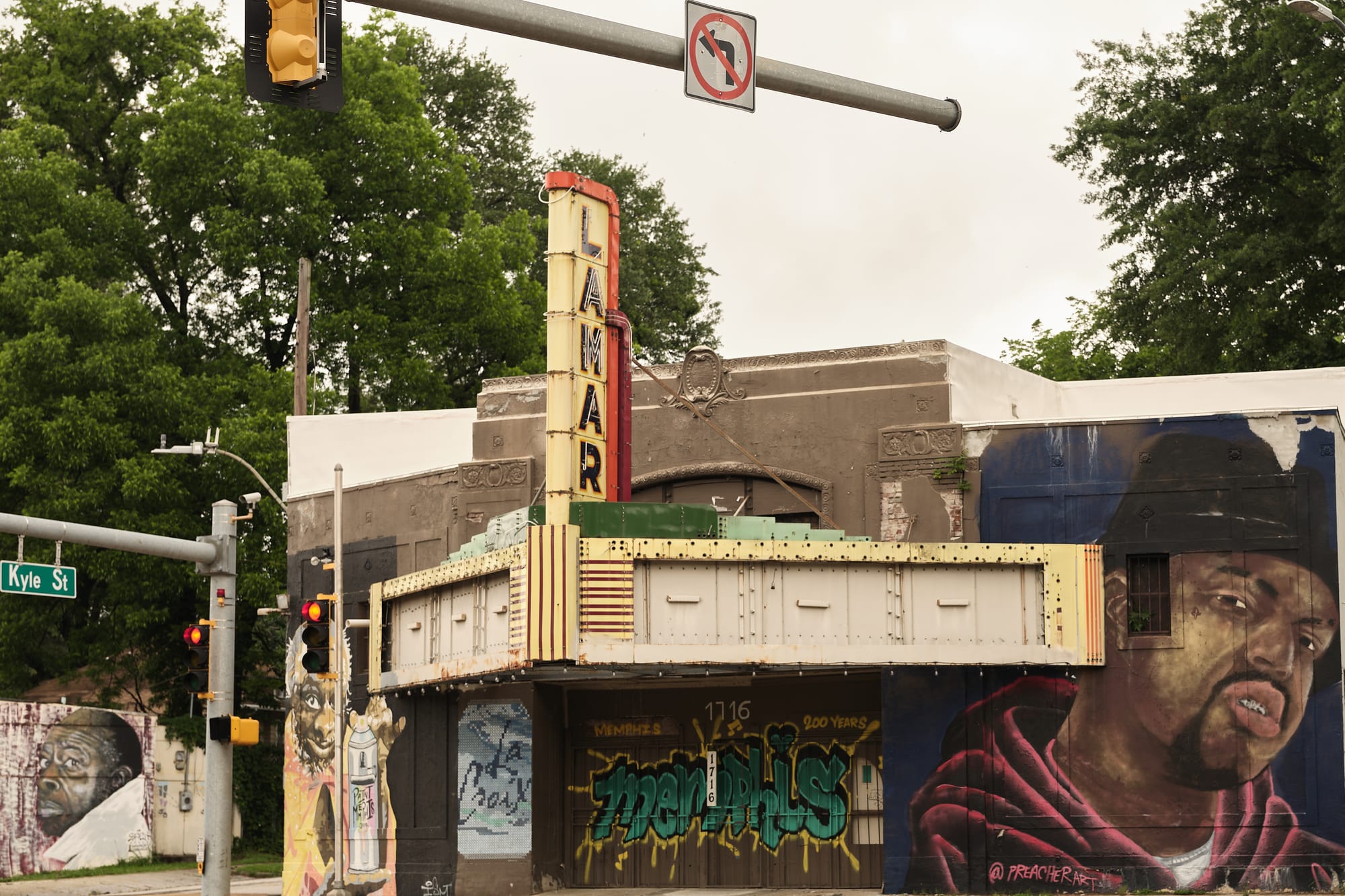
I take pictures, but it's more about the exploration than then photography. The pics of the Lamar and the Soulsville painting and others I didn't show you like from the restaurant and Stax Records are not good photographs, but they were good times. I saw interesting things and spoke to interesting people. I don't know about the pic of Lonnie and his friend, maybe it's good, I can't tell yet, but I didn't stop to chat with the intention of taking the photo, though obviously it's always a possibility. I stopped because he waved at me. That, btw, is kind of a loose rule within my methodologies. If someone waves at me, I usually stop to chat. If I'm comfortable and see a composition, then I'll ask to take a photo. But usually I just chat and move on.
The next day provides a better example of my methodologies, such as they are. I somehow got it in my head to go down to Oxford, the home of the University of Mississippi, or Ole Miss in racist cracker terminology. I like going to Big State U towns and checking out the downtown and campus. Oxford seemed a little on the weird side. It was summer so most students were gone, but for some reason a lot of alumni were around. They were mostly old and looked like animated corpses, but there were quite a few that were overweight with bright red whiskey burned faces like you'd expect to see when the hood comes off. Just about all of the young women I saw were ridiculously thin and, just slightly more meaty than famine victims in the Sahel and, of course, they were pretty much all blonde, though not naturally so.
On the town square I got hit up by a local PBS crew to appear on some b-roll they were shooting for some kind of Antiques Roadshow like thing. They wanted to film me walking around a corner and reading a plaque in Faulkner Alley. I worked with them on that for awhile and then went to what appeared to be the cool college town bookstore.
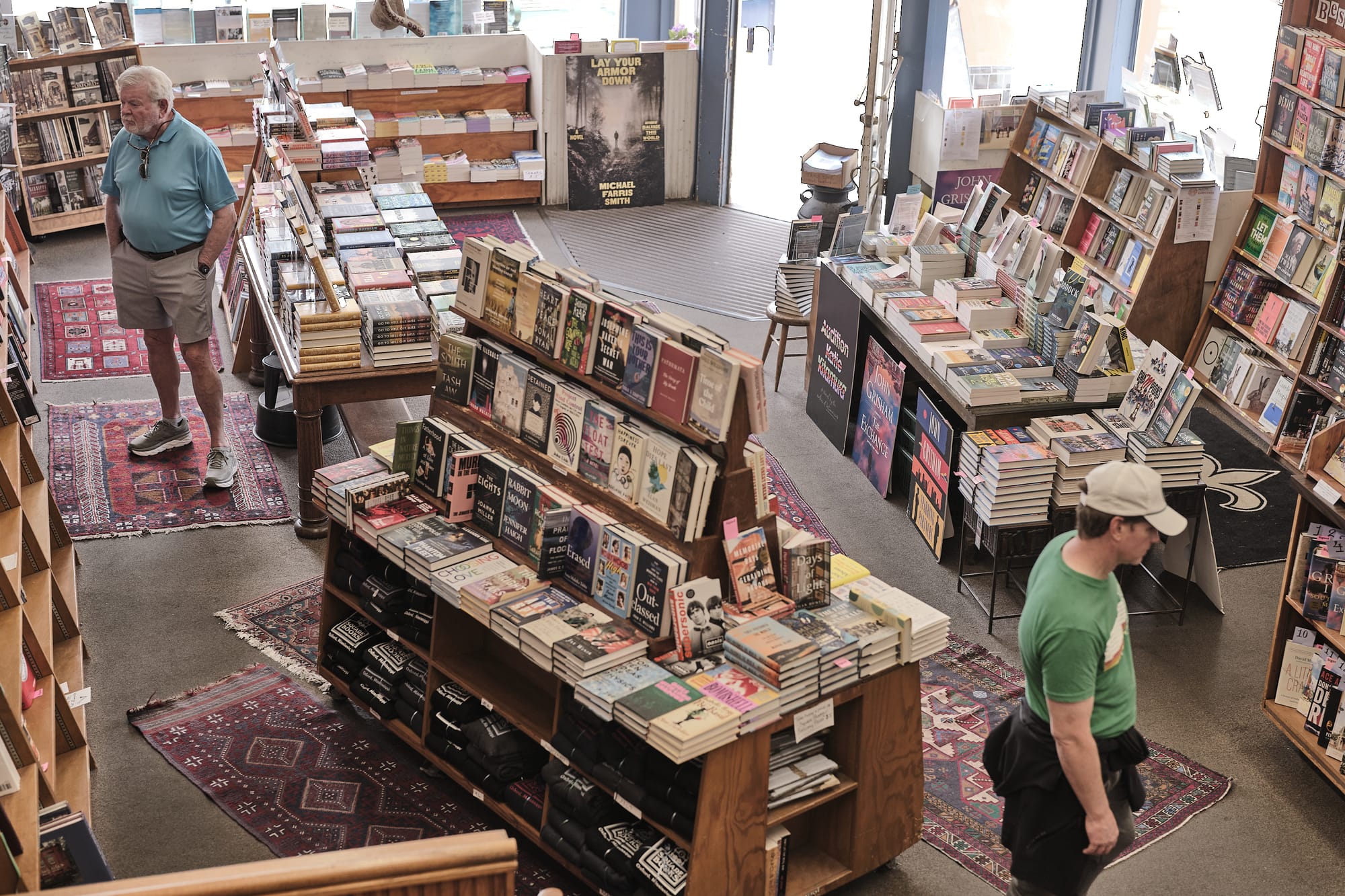
There was a lot of Elvis shit there, of course, and I framed one photo to show Elvis books with a lone Carl Perkins biography just slightly out of focus as an homage to "Mystery Train." That didn't work, but the interesting thing turned out to be a book called "William Faulkner in Holly Springs." Apparently Faulkner based a lot of his characters on people from there. It sounded like the real Holly Springs was the fictional county seat of Yoknapatawpha County. Must be a really weird place, I thought, full of viscously petty people, scoundrels, and sad sack losers. I'd seen the sign for Holly Springs every day as it was the next town over from where I was camping, so I figured I'd go see just how weird it really was. Little did I know.
But first there were some other tourist things to do in Oxford. Among them was the university museum, which was also the trailhead to the Faulkner estate. As those things go, it was a small museum and mostly uninteresting. Apparently they were most proud of their small Hellenistic collection. I've never cared that much about Greek vases, and I'd been to the Met on numerous occasions, so big deal, right. But the fascinating part turned out to be that it had several paintings by Marsden Hartley.
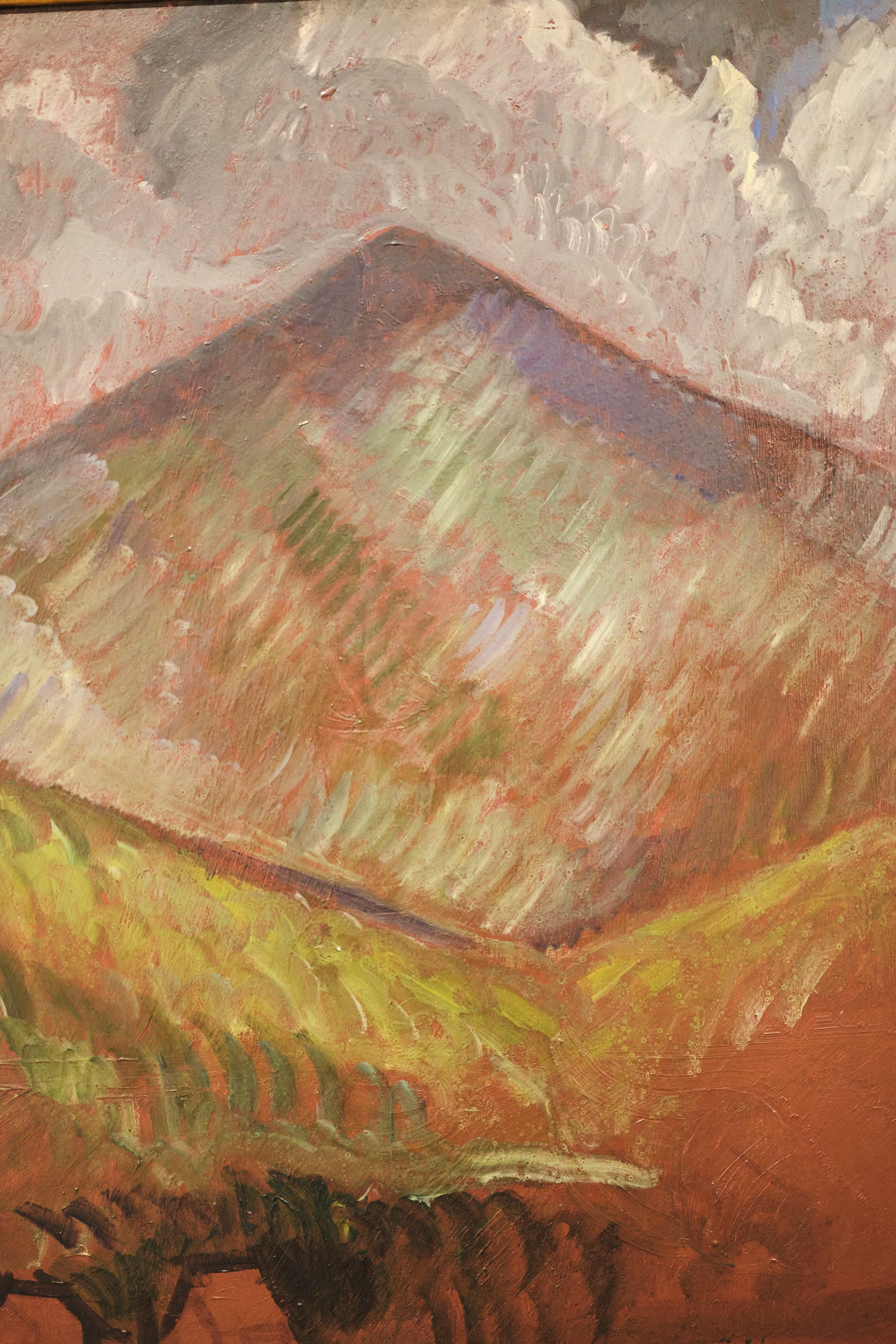
I'm only familiar with Marsden Hartley because I was kind of compared to him once. Awhile back there was an article about documentary photographers in which the writer associated a modern art painter with a contemporary documentary photographer. I was pegged as Hartley. I was a little hurt at first. I should have been Gaugin, right? But I studied Hartley's work and it wasn't actually all that insulting. Of course the Gauguin's and Van Gogh's went to the more famous photographers. But in their own day, the Gaugin's and Van Gogh's were more like the Marsden Hartley's, if even that well-known, and few remember most of the more famous painters of their day. So maybe next time someone writes that article, in a hundred years perhaps, I'll be given my rightful place as Gauguin. Unlikely, eh, but one can daydream.
The Bailey Woods Trail connects the museum to William Faulkner's Rowan Oaks estate. I made the walk and toured the house and grounds. I realized that I had a lot in common with Faulkner, though unfortunately it didn't include writing skills. We have a similar house and yard, though his was considerably larger, with a much, much nicer woods. He did much of his writing sitting in Adirondack chairs in various parts of his yard and no doubt just relaxed and enjoyed the cool breeze as I did. He hiked his woods, explored the deep ravine and sandy creek and observed the abundant plant and animal life and all that showed up his novels.
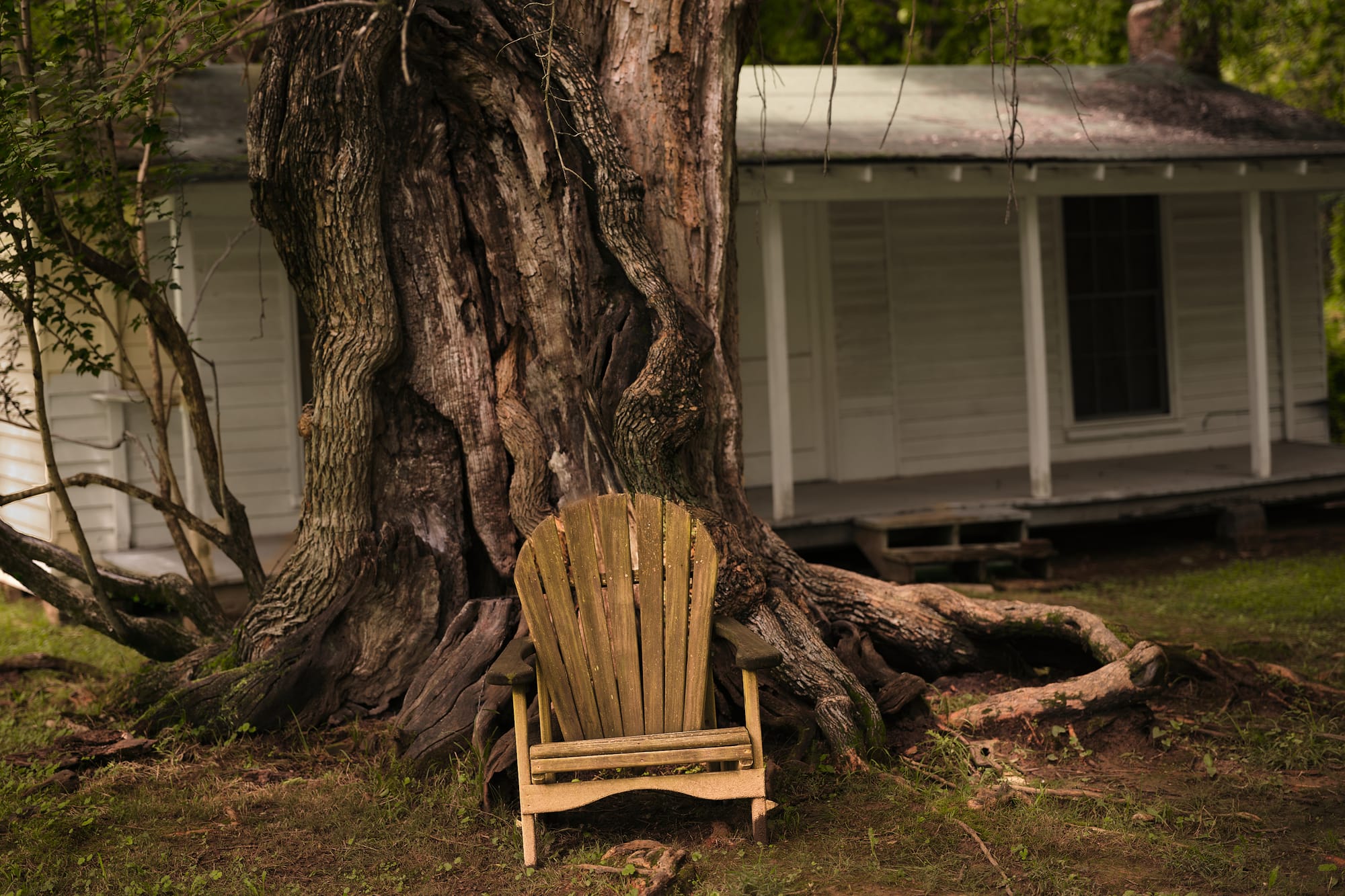
I sat for an hour or so in the chair pictured above. I did a 20 minute meditation and may have dozed off for a few minutes. I thought of Faulkner and his stories and characters and how so much of it was written in the same kind of chair and no doubt some of it under this very tree. It seemed like I felt his spirit when I was in that deep meditative state. I've rarely been so relaxed. If ever there was an ideal place to write, that was it. I also had a nice chat with the estate's curator.
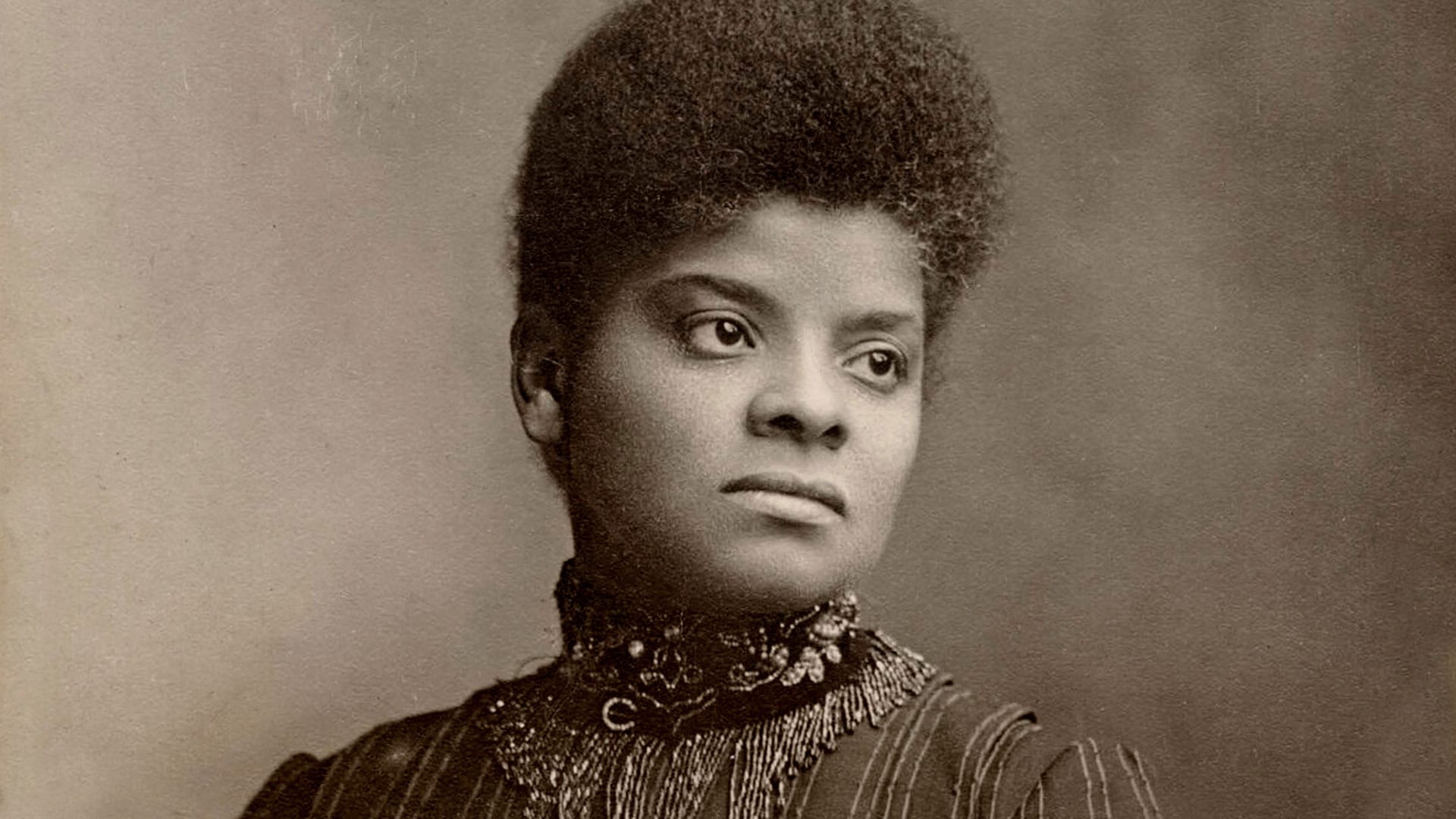
After lazing in Faulkner's chair I got back on the mobility scooter and headed up to Holly Springs.
I was surprised that it seemed to be a majority black town. I was then surprised to learn it was the birthplace of Ida B. Wells and there was an Ida B. Wells museum. Then I was further surprised to learn it was the home of Mississippi Hill Country Blues, of R.L Burnside and Junior Kimbrough.
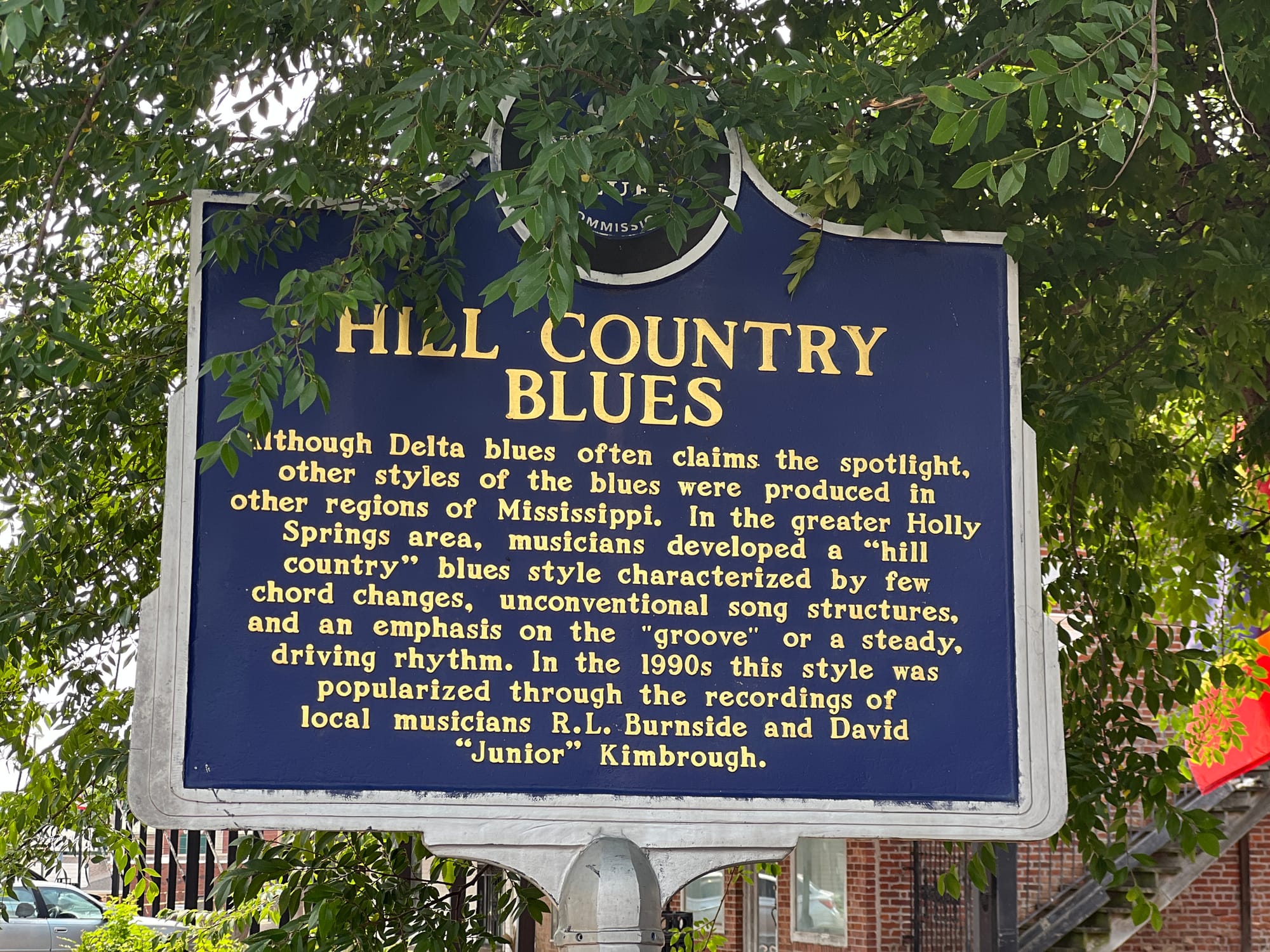
I know about Ida B. Wells because of the photograph above. That's what inspired me to read about her life. It's such a great picture. I can't think of a better portrait. It goes so much deeper than the outward beauty of both the photo and the subject. It captures a woman who is profoundly sad, smart, and determined.
Born into slavery in Holly Springs, Mississippi, she had worked her way through Rust College. When she was 24, she wrote, "I will not begin at this late day by doing what my soul abhors: sugaring men, weak deceitful creatures, with flattery to retain them as escorts or gratify a revenge." What a charming sentiment. Soon she became co-owner and editor of Free Speech, an anti-segregationist newspaper based on.Beal St. When a conductor on the Chesapeake Ohio & South Western Railroad ordered her to give up her seat on the train, Wells refused to do so. This was 71 yers before Rosa Parks refused to give up her bus seat near Montgomery, Alabama. The conductor, with assistance from two other men, had to drag Wells bodily out of the railway coach. Upon her return to Memphis, she sued the railroad and won her case in the local circuit court, but the railroad company appealed to the Supreme Court of Tennesse. In 1887 the Supreme Court justices reversed the lower court's ruling in favor of the railroad.
Ida B. Wells wrote often about the burnings, the lynchings, the earrings, flayings, beheadings, and quarterings of black men and women in the South. After examining unending reports of lynching attributed to alleged "rape of white women:, she concluded that Southerners concocted the rape excuse to adumbrate their intrinsic reason for lynching black men: "black economic progress: which threatened not only the pocketbooks of white Southerners, but also their ideas about racial superiority.
Tav Falco – "GHOSTS BEHIND THE SUN Memphis: Splendor, Enigma & Death
That last graf is the crux and it continues to this day. On the racial superiority level, gimps like Trump and his wealthy, powerful cohorts, most of whom inherited their fortunes and would be selling aluminum siding, smoking meth, or in jail if they had to actually compete with normal people, have to erase black history and ban minority hiring in order to maintain their economic superiority and racist delusions. White people, particularly in the South, were for so long the only people allowed to hold good jobs that they'll do everything they can to avoid having to compete in a fair marketplace of labor. And as the generations pass since the civil rights movement, more and more white collar and professional jobs are subject to competition, pushing the self-styled "merit is all that matters" folk into wanting protection from merit-based competition. The fact that Wells clearly understood all that and fought against it and ultimately won during the worst of Jim Crow is crazy impressive.
So of course I went to the Ida. B. Welles museum, but it turned out to be one of the worst experiences I've ever had in my travels. The ladies there were straight up hostile. They couldn't have made it any plainer that I was not welcome there. They assigned a poor girl with a bad stutter and apparently asthma as my guide. She was flat out terrified of me and could barely get out a sentence. She didn't appear to know much about Ida B. Wells anyway, and there wasn't really much about her in the museum. No photographs were allowed. Obviously they're not into Facebook and Instagram. I asked why and was told to read the sign that said No Photography Allowed. I didn't care about taking a photo, it was just weird. I get that there's a valid reason to worry about white guys profiting off of other people's images or stories, because you know, that's what we do. But a museum should want the exposure. What profit could anyone possibly make on a photo of an older Ida B. Wells?
But I get it. Ida B. Wells exposed and documented the horrific evils of lynching and other far more horrific tortures. The old ladies at the museum no doubt heard stories from their parents or maybe their parents were murdered. It's easy to say we shouldn't judge everybody by the actions of a few, but when the actions are that horrific and personal, you've kinda gotta give them a pass.
After the museum, I ride around Holly Springs. On the edge of town I'd noticed a bunch of guys hanging out under an eve in what looked like an abandoned bar or club. One of them waved at me so I pulled over and chatted. He said have a seat, hang out. So I took a seat and hung out. I was really tired by that point. The mobility scooter is not a smooth ride. And I'd been doing camp shit and riding and hiking around Oxford and then Holly Springs and the Ida B. Wells Museum debacle. The drugs were wearing off. My body was just so fucking happy to be sitting in the shade. My mind was mostly silent. There was a steady stream of guys coming and going, sitting in the shade, drinking beer, smoking reefer. I chatted with a few. It reminded me of the small town where I grew up.
After awhile the guy who waved at me and invited me to sit for awhile came back over, surprised I was still there. We talked some more and it turned out he was DuWayne Burnside, son of R.L. and relative of many. I was really wasted by that point and didn't have much to say beyond something like "wow, cool." He showed me around the bar and I looked at his daughter's school project (pictured below) about her grandfather. We kind of hit it off. Sometime later I was about to leave and thought I should get a few photos.
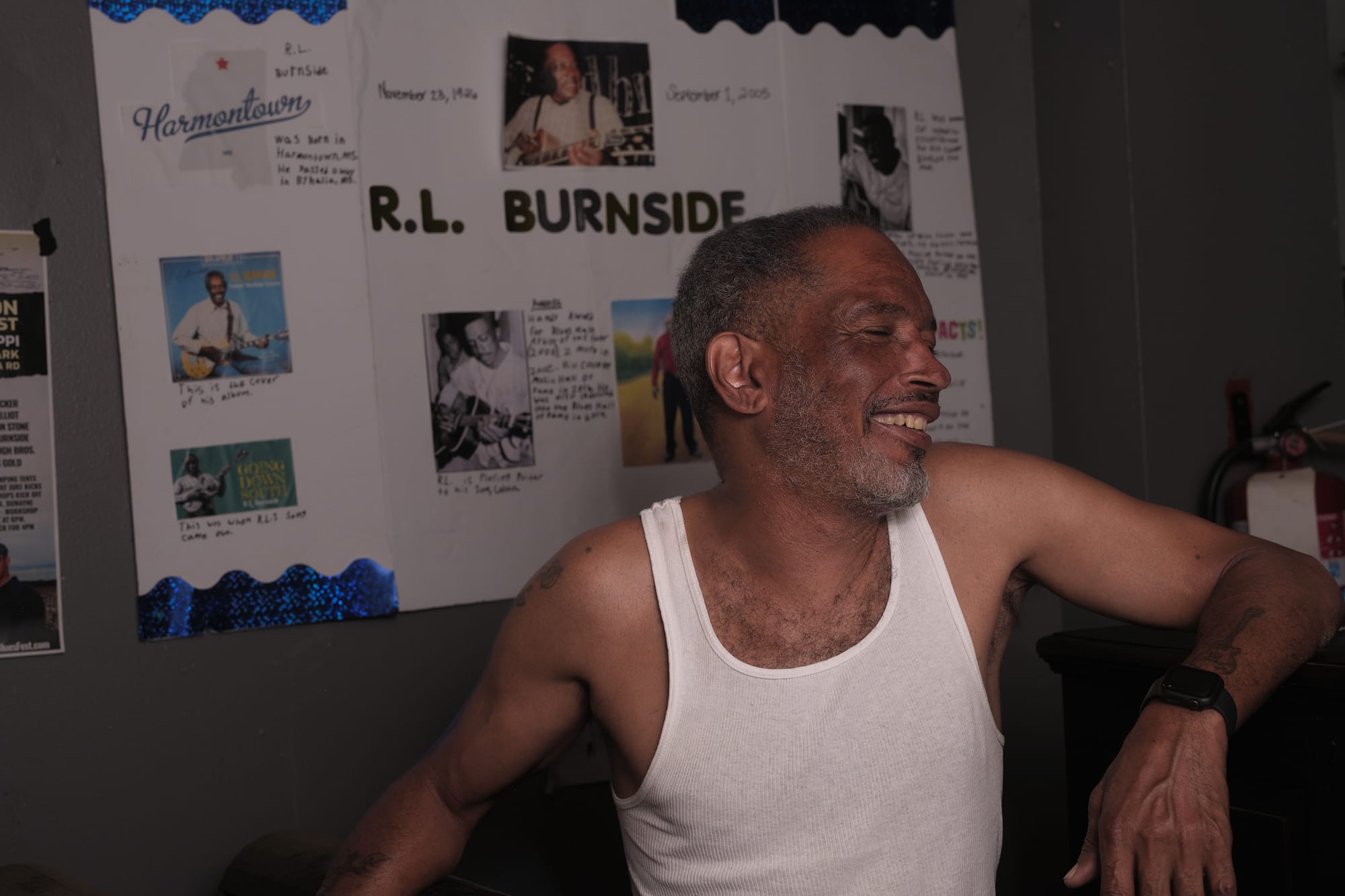
Later I listened to his music online and was blown away. He's a great Mississippi hill country blues artist. A new Northern Mississippi All Stars album features him doing a fantastic version of "Poor Boy."
I don't go out looking to meet famous or very accomplished people. I'd rather not, for the most part. But it's cool to kind of get to know someone out of context and then find out. DuWayne was just hanging out in his hometown with childhood friends and family. I was comfortable, largely because I'm from a small town and had grown up with that kind of scene.
Once I was introduced to the charismatic, magical individual known as Rural Burnside in the backwoods of Panola County in north Mississippi, and I heard his haunting, trance-dirge guitar and filmed him through an interminable night in his honky tonk, I fell then completely under the spell of his snaking, swamp infested rhythms. I had never heard anything quite like these darkly melodious strains of erotic yearning and the torment that seemed to flow effortlessly from his body and from his battered, de-tuned electric guitar. His honey tonk was like a secular church... At some point during this period I began to see no separation between what was in front of the camera and what was behind it... between being behind the camera and being in front of it, no separation between the observer and the observed.
Tav Falco – "GHOSTS BEHIND THE SUN Memphis: Splendor, Enigma & Death
For the last night of the trip I went to the car races across the river in West Memphis, a different world altogether. Here's some pics.
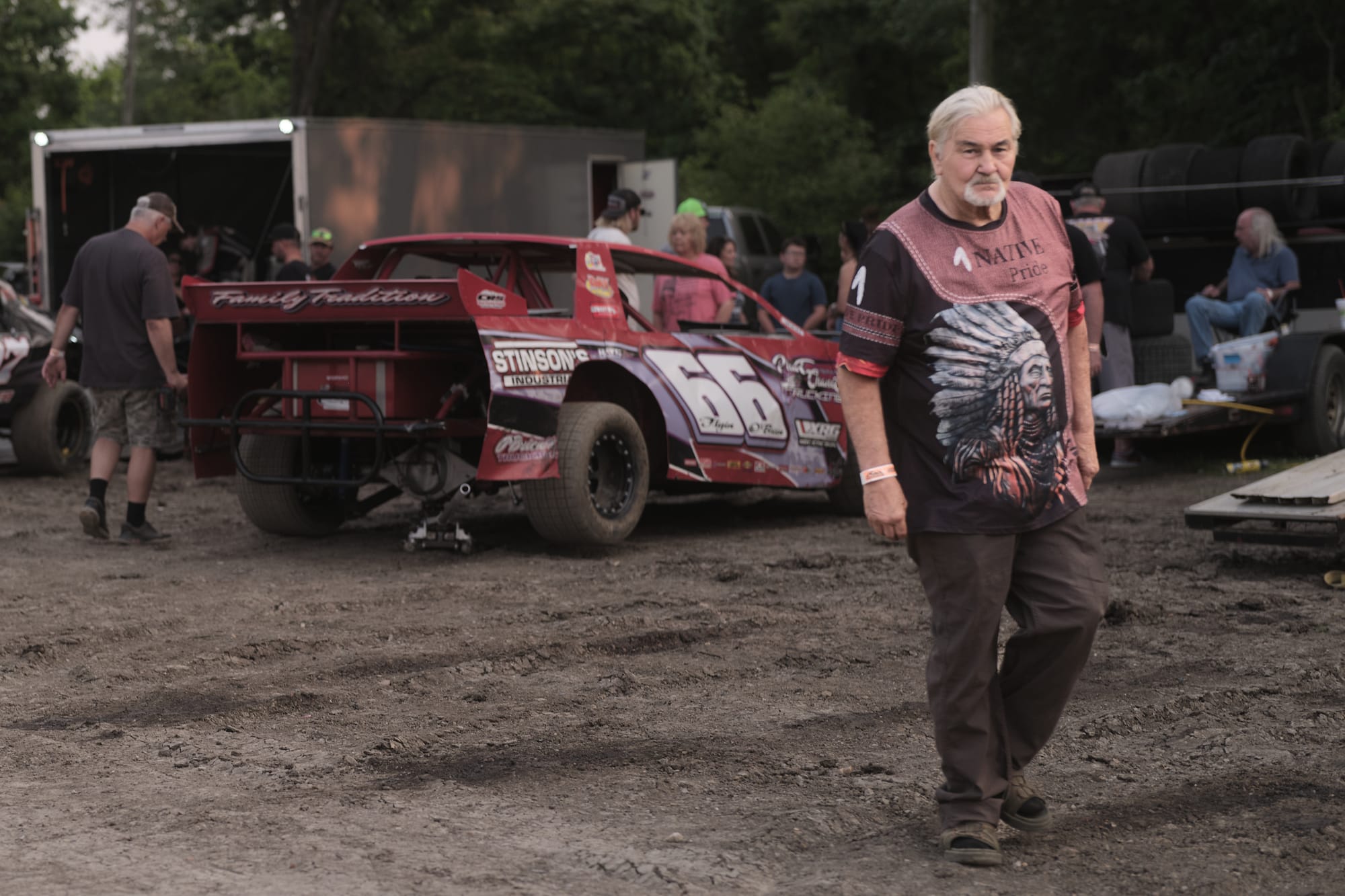
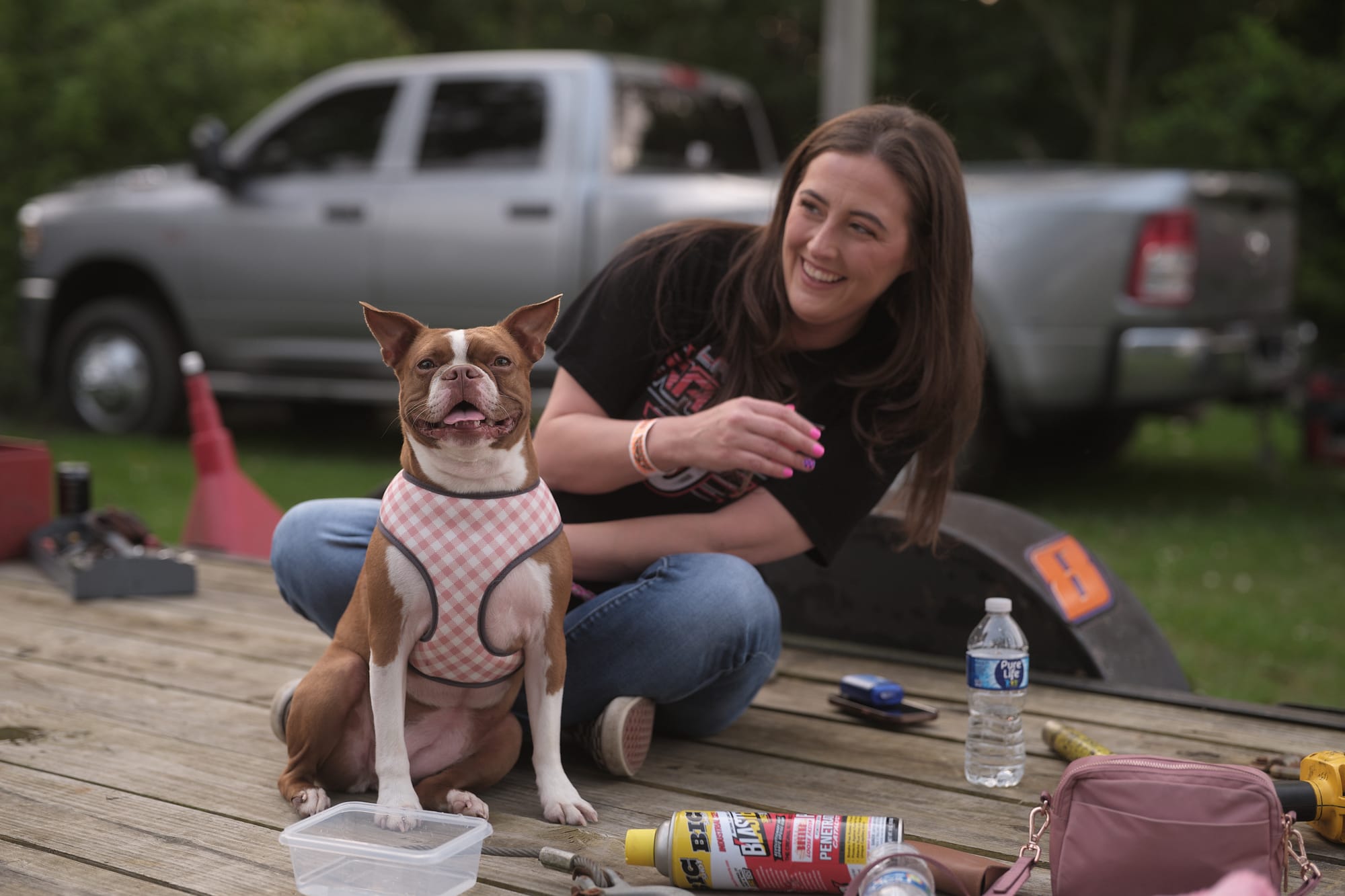
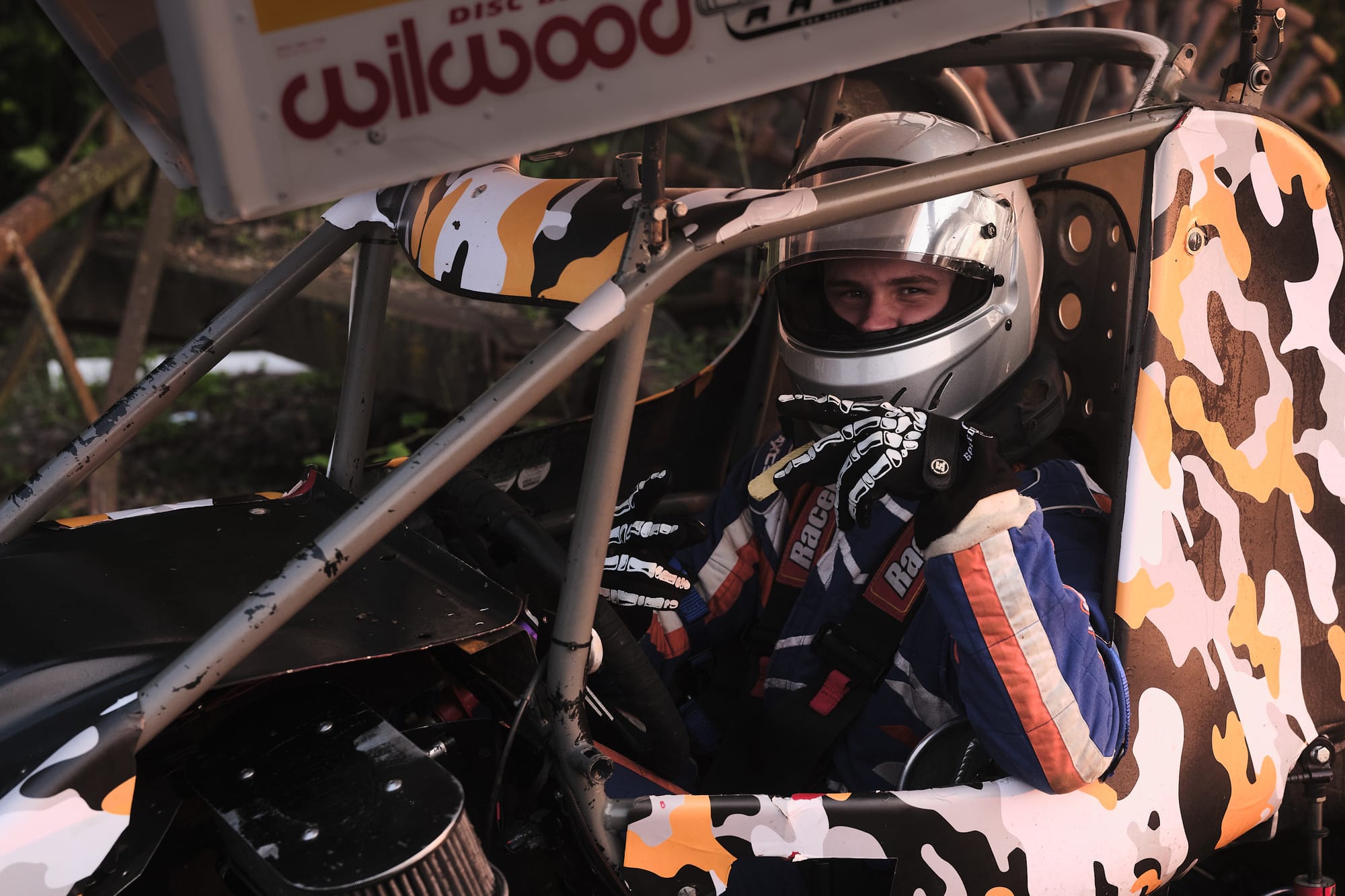
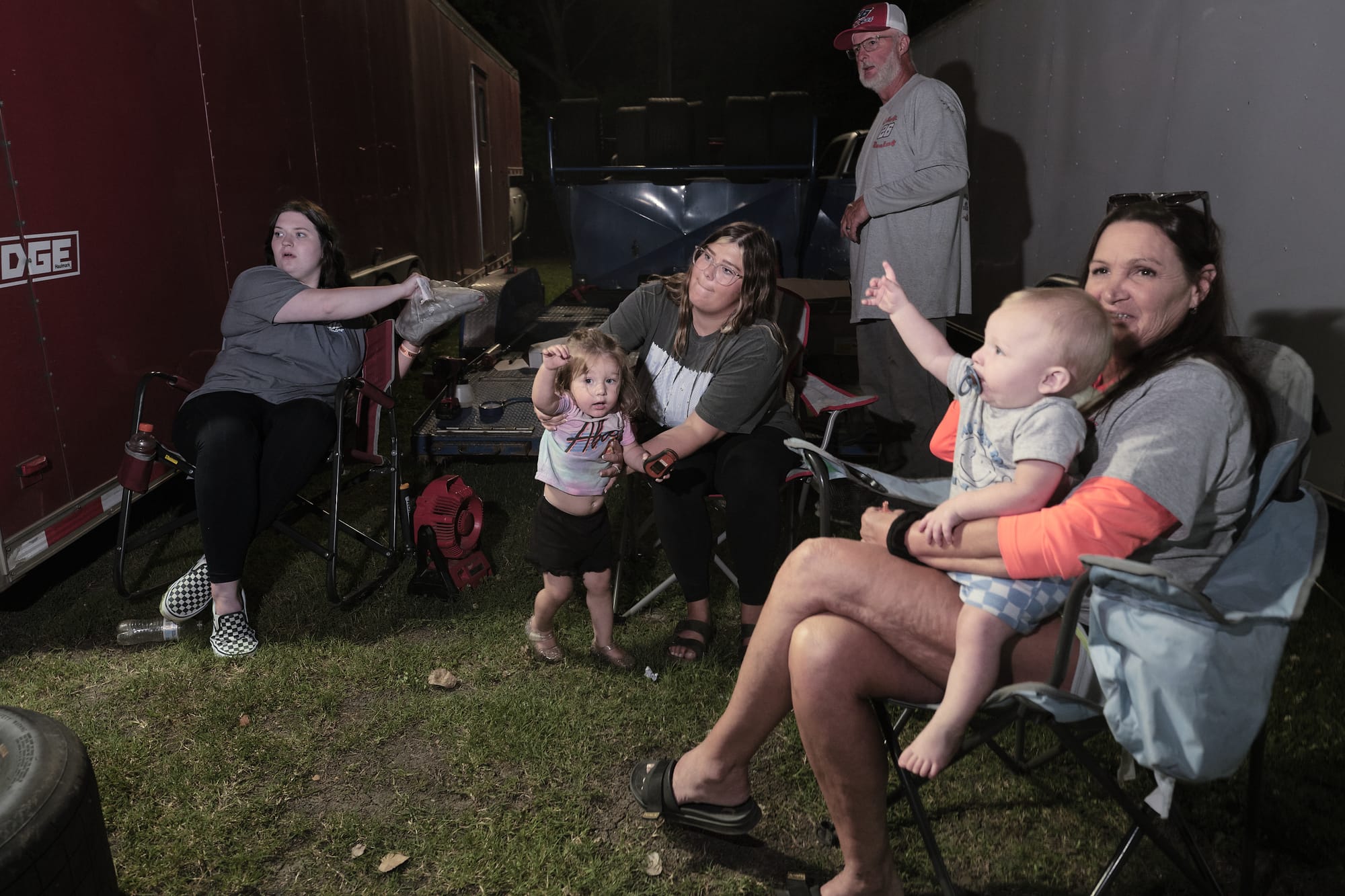

That's all for now, folks.